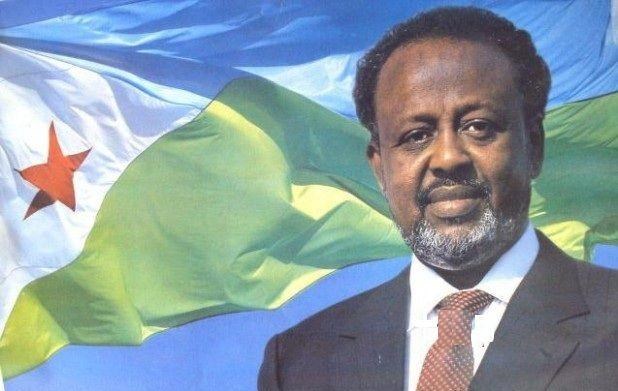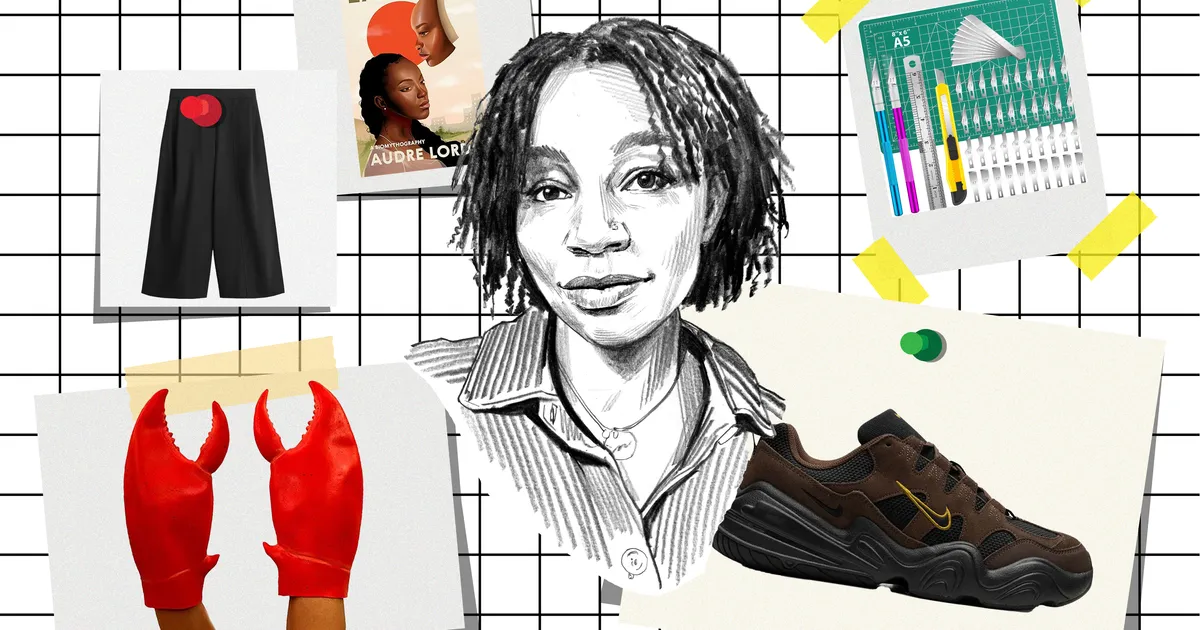Copyright hiiraan

Hiiraan Online Today from Hiiraan Online: Somali Music advertisements How President Ismail Omar Guelleh Rescued Somalia from a Bottomless Abyss FacebookFacebook messengerTwitterWhatsAppLinkedInTelegramEmail By Deeq S Yusuf Monday October 27, 2025 Introduction The 2000 Arta peace process held in Djibouti, is hailed as a milestone event for it laid the foundation for a new political dispensation in Somalia. Under the tutelage of H.E. President Ismail Omar Guelleh, the Arta Peace and subsequent 2008 Djibouti Peace Accord helped reset Somalia on the right path, averting perpetual collapse while initiating the transitional governance structure and institutionalizing the subsequent federal order. In Omar Guelleh, Somalia can count on a fraternal, visionary statesman committed to the development of the Somali security architecture and establishment of the institution-building processes that underpin its nascent democracy and its people’s gradual march towards peace, development and social prosperity. State Collapse The majority of instances of state collapse involve cases in sub-Saharan Africa, where, usually, armed rebellions challenge state authority and shatter projects of centralized control. In Somalia, state collapse was occasioned by a protracted civil war and other forms of widespread intra-state violence. One of the best-documented models for analyzing collapse dynamics is Dmitry Orlov’s "5 Stages of Collapse.” Orlov, a Russian-American author and analyst, is best known for his insights into societal collapse having studied the Soviet collapse, and witnessed its final fall in 1991. Paradoxically, Somalia, a former Soviet ally, slid into political doldrums in 1991, the same year the Soviet Union crumbled. Orlov identified 5 phases in a collapse including financial, commercial, political, social and cultural collapse. While the former two phases may not hold true for Somalia, the latter three bear stark relevance to Somalia’s state collapse in 1991 . Orlov describes political collapse as an occurrence in which “Government institutions become ineffective or collapse entirely. The state loses its ability to maintain law and order, leading to social unrest and power vacuums” while he attributes social collapse to disintegration of societal cohesion where communities break apart, support networks weaken or disappear entirely as the most downtrodden revert to survival mode. Further, Orlov notes that “cultural collapse stems from the degeneration of shared values and belief systems leading to spiritual and moral disorientation where survival of the fittest becomes the norm and the struggle for life prevails everywhere .” Think tanks dedicated to researching the best insights, methods, and tools to navigate uncertain times have applied Abraham Maslow’s theory of hierarchy of needs to synthesize the break-up of collective social dynamics. Maslow is an American psychologist known for his seminal 1943 book titled “A Theory of Human Motivation.” In the Somali case, a clear and concise analysis of pre-collapse stages postulated in this theory can help shed light on state collapse. These stages include political decay where political factions polarize the society, elites and oligarchies lose sight of the common interest, prevarication grows, and competing factions multiply . As political factionalism intensifies, social decay sets in as bonds weaken, mutual senses of identity and purpose disintegrate and the population fragments into opposing communities, and social unrest rises. Unchecked political and social decay culminates in cultural decay characterized by the erosion of a society’s culture, with a loss of collective meaning where shared values weaken, common narratives disintegrate, and eccentric cults and ways of life begin to appear. Understanding the underlying causes of violence is essential for devising effective solutions. Kautilya, an ancient Indian philosopher and statesman, emphasized the importance of addressing the root causes of political violence to prevent its recurrence. His universally –acclaimed insights remain relevant today and can provide valuable guidance for Somalia’s modern policymakers. Kautilyan strategies include “identifying the specific grievances and injustices that drive people to violence, studying social dynamics, examining the social, economic, and political dynamics that contribute to unrest, recognizing external influences and considering the role of external actors and influences in fueling violence .” All these dynamics came into play during the Arta Peace Process. H.E. Ismail Omar Guelleh’s Historic Inaugural UNGA Address - The Prelude to Arta Omar Guelleh’s unwavering commitment to bring peace to Somalia is rooted in his tireless efforts at engaging the international community to take a proactive action to prevent Somalia from descending into a bottomless abyss. In 1999, the newly-minted President Guelleh moved fast using his inaugural address at the 54h session of the UN General Assembly to bring global attention to Somalia’s unfolding crisis. He said a political settlement cannot be reached in Somalia by placating the marauding warlords. Peace he noted, can only be struck by empowering Somalia’s civil society, and other peaceful, non-combatant forces. During his monumental, Somalia-focused UNGA address in September 1999, President Guelleh informed the international community that “Somalia was falling apart and was no longer a politically viable entity” adding that the continued anarchy in Somalia was indicative of the failure of global governance to serve poor countries in the developing world . He described how a decade of violence, hunger, deceases and uncertainty had brought unparalleled despair that existed virtually nowhere else in the world at the time. “The devastating civil war shows no signs of abetting in most regions of the country. Additionally, the country is prone to becoming a magnet for criminal elements, drug traffickers, terrorists and a dumping ground of dangerous toxic waste ” warned President Guelleh. His statemanly speech highlighted how the warlords were bent on committing crimes against humanity, including aiding and abetting the wanton persecution of civilians, violating human rights, causing state collapse and destruction of the country, to endless mayhem. He categorically stated that the drive to bring feuding warlords to come into a political settlement was a futile attempt and a wishful thinking by international actors pursuing this unholy path mired in a ceaseless stalemate. Perhaps his biggest contribution to the UNGA address was to bring the largely ignored civil society into the equation. Stating that he loathed the idea of another conference held uniquely for warlords, President Guelleh added it was time the Somali civil society, including intellectuals, artists and mothers took responsibility.” He concluded his powerful and well-received 1999 UNGA address by stating “I wish to reiterate that we must stop our complacency with the Warlords and that any future processes should be more closely tied to the Somali Civil Society .” Simply put, President Guelleh’s mission was to empower the Somali civil society to take the lead in the quest for peace while seeking to delegitimize and sideline the warlords. Many political analysts agree this historic UNGA address laid the groundwork for the Djibouti Peace Conference. Arta – President Guelleh’s Vision for Peace in Somalia Initiated by President Ismail Omar Guelleh, the Somalia Peace and Reconciliation Conference (SPRC), sometimes called the Djibouti Conference, was a series of meetings held in Arta, Djibouti, from April – September, 2000. In contrast to previous reconciliation meetings, the Arta conference included extensive participation by unarmed civic leaders – intellectuals, clan and religious leaders and members of the business community . President Guelleh made sure that warlords had no place at the negotiations table in Arta. The SPRC culminated with the Arta Declaration and the formation of the Transitional National Government (TNG), the first Somali government since 1991 to secure a measure of international recognition, enabling Somalia to reoccupy its seat at the UN and in regional bodies. It became the basis of all future Somali governments. The Declaration also established the Transitional National Assembly (TNA), which elected Abdulqassim Salad Hassan as the new President of Somalia. Guelleh’s drive for the Arta peace was significantly important because he provided a platform that established the first Somali-led Peace Initiative that brought together a broad range of participants drawn from Somalia’s civil society including clan elders, religious leaders, intellectuals, women representatives and more. Guelleh’s indigenous-led effort garnered international support as observers from the United Nations, Organization of African Unity (OAU), the Arab League and IGAD backed the process. The Conference’s focus on reconciliation and inclusion of marginalized groups underscored Guelleh’s desire to addressing the root causes of the conflict in Somalia as well as establishing lasting peace and development, building a more inclusive and democratic society. Drawing from his deep understanding of Somalia’s complex dynamics, Guelleh was well-placed to promote dialogue, reconciliation, and sustainable development and check the warlordist violence that was tearing Somalia apart. His timely intervention ensured that Somalia did not slide into perpetual collapse. While the world looked the other way, Guelleh sought to address the root causes of the Somali conflict to prevent the recurrence of violence. He stood for fair representation ensuring minority groups have adequate representation in legislative bodies. He urged the Somali conference participants to pursue and design a formula that will help them understand the root causes of the conflict, address systemic issues and find long-term solutions that can stymie communal violence. Guelleh’s push for peace in Somalia did not end at Arta. He hosted the Djibouti Peace Process of 2008 to build upon earlier efforts, cementing gains and advancing constructive dialogue to pull Somalia out of cycle of violence. The process received the support of the UN, the AU, EU and United States. It culminated in the signing of the agreement between the Transitional Federal Government (TFG) and the Alliance for the Re-liberation of Somalia (ARS) aimed at paving the way for the cessation of all armed conflict across the country. The accord expanded the parliament to include representatives of the opposition alliance and civil society and resulted in an agreement on the formation of a new Transitional Federal Government in early 2009. The Role of Djiboutian Peacekeeping Forces in Somalia Operating in Sector 4, the gallant Djiboutian Armed Forces (FAD) have been involved in AU –led Peace Keeping missions since 2011 including the current mission, AUSSOM, and the precursor missions, ATMIS and AMISOM. Since the initial deployment, Djibouti has remained a key contributor to peacekeeping operations in Somalia. Djibouti peacekeepers are currently stationed in several regions, including Beledweyne, Buula-burte and Jalalaqsi in the Hiraan region of Hirshabele state to support the SNA in the fight against al-Shabaab . Djibouti has around 1500 soldiers in Somalia as part of its participation in AUSSOM. Given its tiny population as well as its small armed forces,” its contribution is highly disproportionate, especially when compared to larger countries like Ethiopia, Uganda, and Kenya” stated a security analyst. In both the political and security realms, Djibouti under Guelleh continues to punch above its weight at the regional level and in the international arena. Guelleh ensured that Djibouti deployed a well-disciplined, people friendly force whose primary objectives are to minimize collateral damage, ensuring that military actions are conducted with precision to avoid harming civilians and exacerbating grievances. More importantly, coordination with local authorities is a central plank in the forces ground operations as they work closely with local governments and communities to gain their support and cooperation, while avoiding heavy-handed tactics that can provoke further violence and radicalize moderates. Reviving the Somali Arts After state collapse in 1991, the Somali National Theatre, a key driver of Somalia’s cultural development in the 70s and 80s was closed and was appropriated by armed actors as a war base. As a result, the Somali cultural fraternity was thrown into disarray adversely impacting artistic and cultural development. Sensing the urgent need to protect the Somali cultural scene from potential demise, President Guelleh stepped in and offered Somali artists from across the world a new base to hone and showcase their talent. Djibouti became the new cultural base as artists from the homeland and across the Diaspora descended on the country to revamp the Somali cultural landscape. In Somali society, poetry, theatre and song are the dominant forms of cultural expression. Cognizant of this fact, President Guelleh understands that Somali oral culture is a very powerful tool for promoting peace and conflict resolution. Converging in Djibouti provides Somali artists with the opportunities to explore and develop their creative talent while promoting new forms of expression and collaboration among artists. The capital of Djibouti has been transformed into a new hub for festivals and events that is vital for showcasing talent and visibility of Somali culture. Under Guelleh’s watch, Djibouti continues to host the Annual Forum for Ideas, a high-level of deliberative platform that fosters dialogue among Somalis in the Horn of Africa on strategic Issues. Twenty-five years on, the Arta Peace Process remains a pivotal moment in Somalia’s modern history. It established the basis for future development of Somali state-building process through initiatives that promote peace, reconciliation and inclusion. With Somalia dangling on a deadly precipice after a decade of anarchy and lawlessness, his timely intervention in 2000 ensured that Somalia did not fall into perpetual collapse. Since assuming office in May 1999, President Guelleh has worked diligently to keep Somalia on the international agenda supporting Somali-focused peace accords, spearheading Somali-led initiatives including the establishment of the Transitional National Government (TNG) while assisting in the ensuing Federalization process. More importantly, President Guelleh continues to aid Somalia’s security and stabilization efforts through the deployment of Djiboutian Peacekeepers stationed in the Hiraan region. He has also played a significant role in reviving the Somali artistic and theatrical scenes providing a vibrant Djiboutian base for cultural development. His visionary leadership will have a lasting impact on Djibouti and Somalia. Kudos to President Guelleh for standing up for Somalia. Long Live President Guelleh! Long Live the Arta Spirit! Deeq S Yusuf [email protected] Opinion| Privacy Policy|Sports|Somali Music|Somali Map All Rights Reserved Copyright. © 1999-2025, www.hiiraan.com



